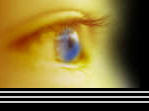The problem with inducing metanoia through the seeding and mapping of the eureka technique is that it can take quite
a long time to do it. Days or even weeks. Psymech (psychological/mechanical) techniques applied to the eureka technique produce
a much more efficient approach. The psymech variants of the eureka technique are capable of producing metanoia in hours or
even minutes.
The most effective psymech technique to add to the eureka technique is overload. By trying to
be aware of 7 +/- 2 things at the same time both relaxation and focus are heightened, and a simple hypnotic/meditative trance
is encouraged. It has been known for centuries that trance states can accelerate learning.
The most effective way to use overload is to make the things you are trying to focus on pack
a good deal of emotional/sensory wallop. One of the oldest tenets of the art of memory is to use images that have emotional
impact. This can most easily be done by trying to set up a variety of rhythms physically while seeding your subconscious.
The state of your bodymind can be altered by breathing and by tensing and relaxing muscles, and by looking at different sorts
of things. Alternating between focus-inducing things (tense muscles, breathing out, etc.) and relaxation-inducing things (relaxing
muscles, breathing in, etc.) can set up rhythms. This adds still more effectiveness to the eureka technique, as any rhythm
will.
However, the breathe might tend to move the mind on a rhythm of its own. Tensing and relaxing
the muscles might be a good way to set up a rhythm for altering the consciousness, but it might be different from the rhythm
the breath sets up. The mind will respond at different rates to oxygen and adrenaline. The way the mind reacts to sights will
happen on a time scale that is different than any of these. Using a single external rhythm to drive the mind into unity might
work, but it also might be fighting one of more natural rhythms. At best this is inefficient and counterproductive. At worst
it can make it impossible to alter the consciousness and enter madspace.
Therefore, using a variety of different rhythms while seeding the mind will not only be more
likely to set up beneficial responses in your bodymind (because your reflexes, the way you respond to each rhythm type, are
allowed to be what they naturally are, rather than trying to drive them all to the same rhythm), but it will also easily provide
the overload of the conscious mind that induces trance.
In time the stress of keeping the awareness so broad will cause the bodymind to try to simplify
things. The different rhythms will start to merge. This is good, and should be allowed. It is a beginning of the mind unifying,
which is the whole point of this exercise.

